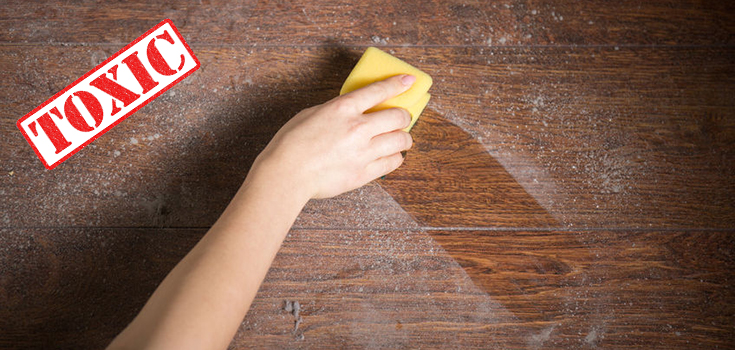How house dust could give you cancer

I’ve been warning you about the dangers of the flame retardant chemicals known as PBDEs for years now. Found in many household items, from furniture to electronics, these endocrine disrupters have been linked to a long list of troubling health issues including brain development, learning and behavior problems in kids and fertility issues, liver toxicity and altered thyroid hormone levels in adults.1
Although two forms of PBDEs were banned in the United States in 2004, some forms of the flame retardants are still in use. But even the PBDEs that are no longer being manufactured have staying power, and while their levels have been dropping they—along with other still legal versions of the creepy chemicals—can be found in our homes, both in products and in household dust.
Flame retardants linked to thyroid cancer
In other words, you come into contact with PBDEs every day. And now researchers say that contact could be sending your risk for cancer skyrocketing.
A new study, presented at the Endocrine Society’s 99th annual meeting, has revealed that the flame retardants found in many homes are linked to the most common type of thyroid cancer in the United States, known as papillary thyroid cancer or PTC for short.2 Thyroid cancer rates have been climbing, and cases of PTC have shot up at an alarming speed.
Suspecting that something in our environment might be behind the sharp rise, researchers collected house dust from the homes of 70 volunteers with PTC and 70 folks with no evidence of thyroid cancer. Plus they took blood samples and analyzed them for exposure to PBDE flame retardants.
PBDEs in house dust raise your risk for cancer
To make sure they were comparing apples to apples the scientist were careful to make sure all the volunteers were similar in terms of age, sex, race, weight, income, education and even the length of time they had lived in their homes.
And to everyone’s surprise, higher levels of PBDEs were linked to a significant increase in a volunteer’s odds of having thyroid cancer. And we’re not talking about a small increase in odds either. In fact, folks with the highest dust levels of the PBDE called BDE-209, were more than twice as likely to have been diagnosed with thyroid cancer as those with low levels of the flame retardant in their homes.
These chemicals are everywhere and the more we’re exposed to them the more they build up in our body fat. And unfortunately there’s no way to completely eliminate our exposure.
But there are some steps you can take that could help reduce your exposure to PBDEs in your home.
1. Replace:
Consider replacing furniture that’s over 10 years old. Older sofas, rugs, mattresses and other furniture that uses foam padding or textiles are more likely to contain PBDEs. Also trade in outdated electronics for newer models. And while newer fire retardants may have issues of their own, reducing your exposure to those that we now know are likely carcinogenic just makes sense.
2. HEPA filters:
Consider using a HEPA air filter. They can help trap the dust particles so they can be removed from your home. There are also vacuums with HEPA filters that trap the dust, keeping it out of the air so you don’t breathe it in.
3. Wash:
Thoroughly wash your hands several times a day. Although it may seem a little too easy to be true, there’s research showing simply washing your hands several times a day can significantly reduce your blood levels of PBDEs.
Research at the Boston University School of Public Health suggests that the invisible dust that sticks to the natural oils on our hands is likely providing a path for PBDEs to enter our bodies. But when folks exposed to the chemicals washed their hands four times a day, the levels of PBDEs in their blood were three times lower than those who didn’t do the regular hand washing ritual.3
4. Support:
And perhaps the most important thing you can do to combat these creepy chemicals is to support organizations like the Environmental Working Group, which work to get tough regulations on these dangerous chemicals passed.
Take steps to reduce your exposure to PBDEs, and lower your risk for thyroid cancer, starting today.








Recent Comments